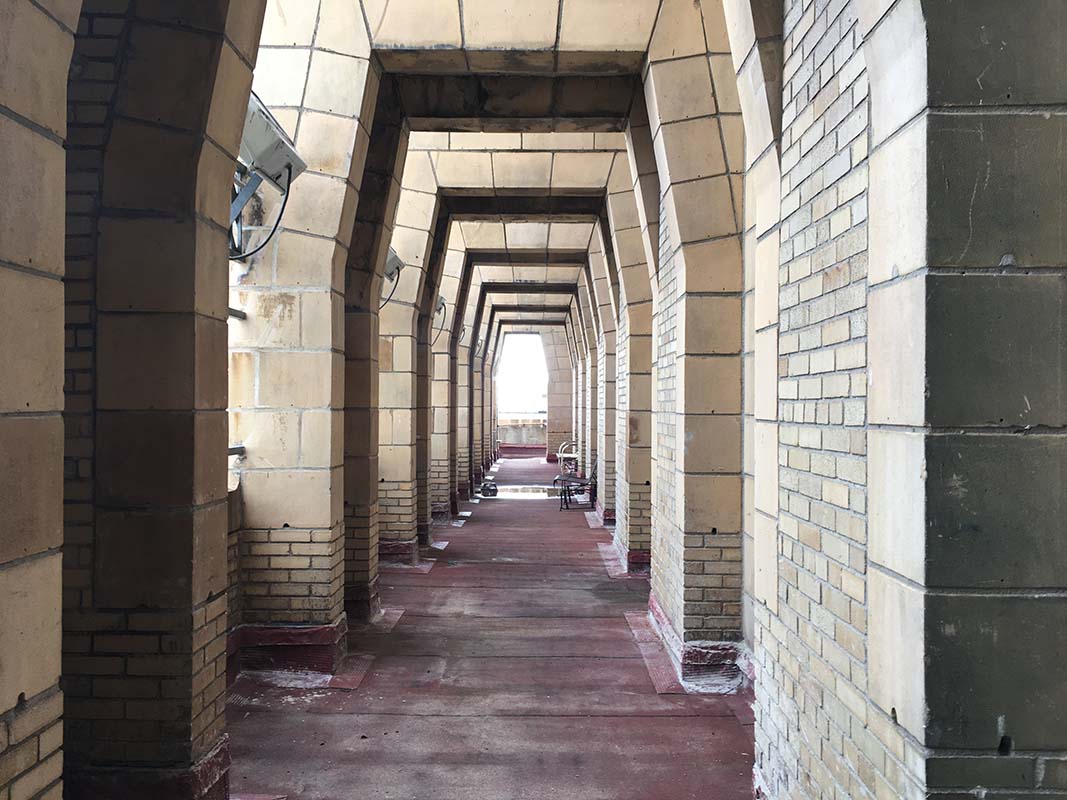Like many of New York City’s Art Deco skyscrapers, the Chanin Building (122 E. 42nd Street) next to Grand Central Terminal once had an observation deck that was open to the public. When completed in 1929, the 56-story skyscraper was the third tallest in New York City, shorter than only the Woolworth Building and the Metropolitan Life Building. Its 56th floor wraparound terrace was accessible for a small entry fee. The 1939 WPA guide to New York City lists it as one of the seven observation decks open to the public. According to the 1961 guidebook Where Shall We Take the Kids?: A Parent’s and Teacher’s Guide to New York City, the fee then was 25 cents and the observation deck was open daily, including Sunday from 9 AM to 6 PM. As we discovered on an exploration, the observation deck is still there but now closed to the public.
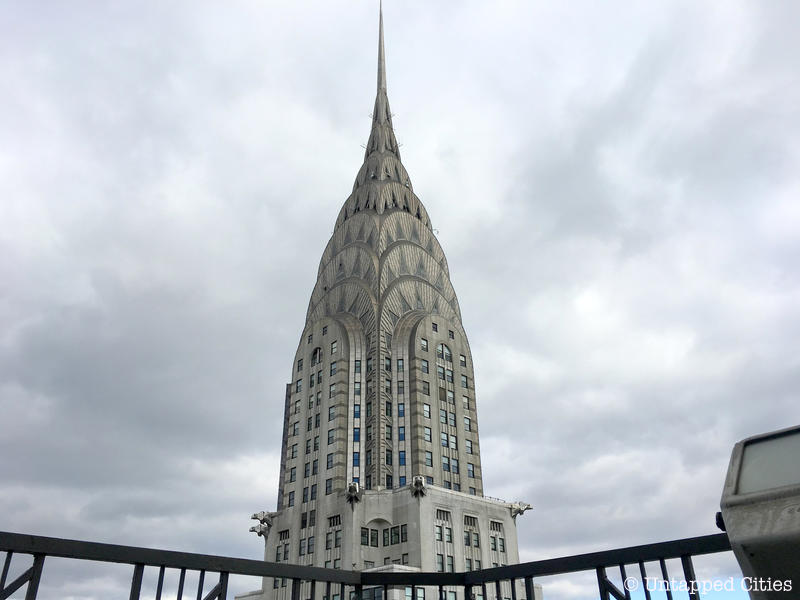
What makes the Chanin Building observation deck quite distinctive is the series of buttressed arches, a form that is repeated from the fifth and sixth floor facade of the building. This, like the ornamentation of the facade in materials like bronze, marble, terra cotta, colored glass, were all custom made for the building – which are overlayed on top of a steel-frame. Originally, as the Landmarks Preservation Commission notes in its designation report, there would have been a battery of 212 flood lights on this level, that “illuminated the crown of the tower at night adding to its dramatic effect of the skyline. This emphasis on dramatic illumination is another quality associated with Art Deco architecture, and it is characteristically displayed in one of Hugh Ferriss‘ noted renderings of the buildings.” Today, there are still flood lights attached to the observation deck, but not nearly as many as before.
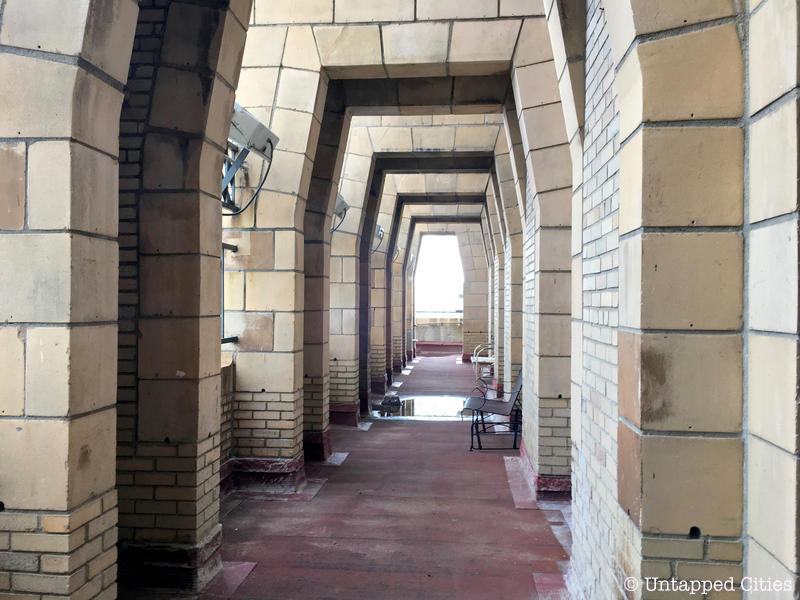
The stonework of the building is a mix of buff brick, terra cotta, and limestone which surround the exterior perimeter of the deck as well, except for the corners which have an additional metal grid, which seems to have been added later for safety. Small benches are still present on the deck, a reminder of its former use, mixed in with infrastructure elements that have been added.
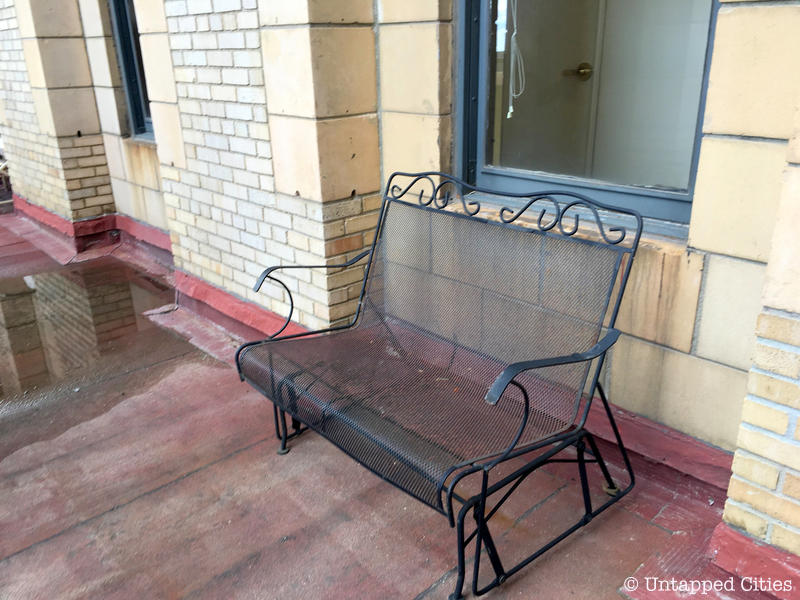
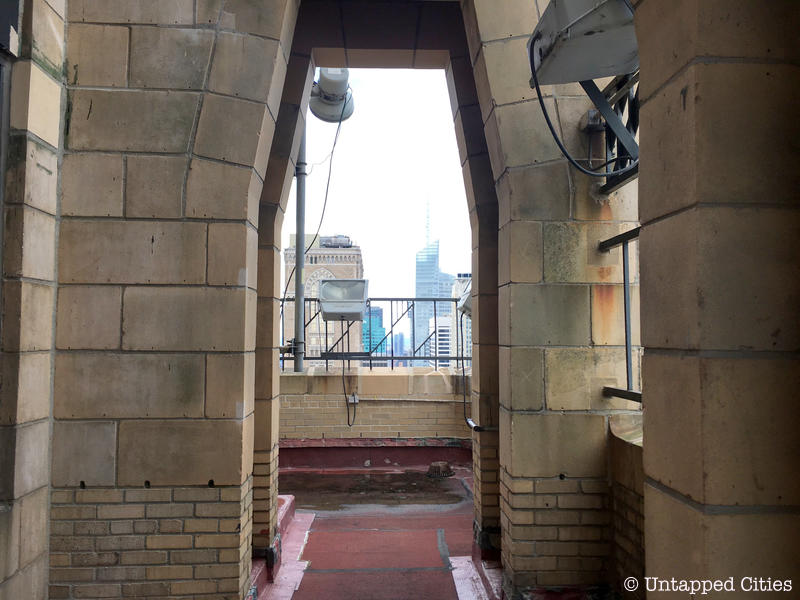
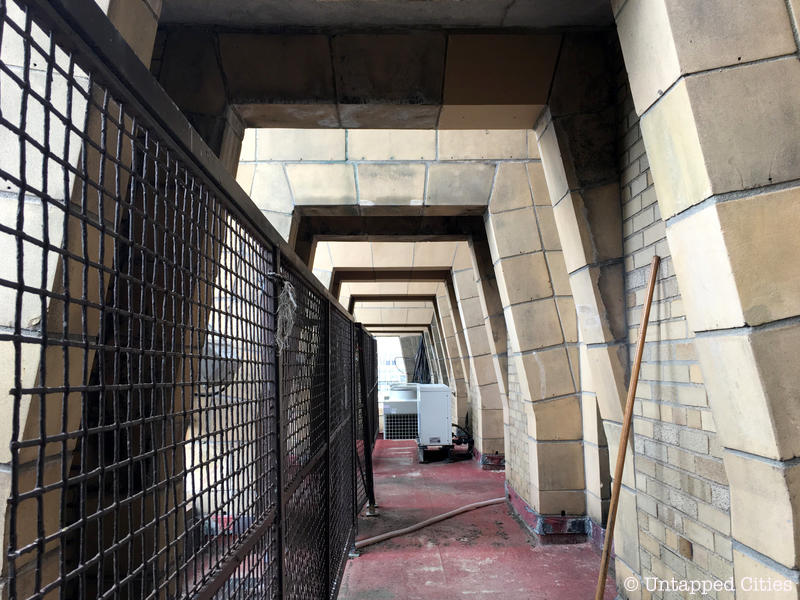
Today, with the stonework in a state of minor disrepair from general lack of use, the views remain the most impressive aspect of this observation deck. You can see the Chrysler Building quite close up, Grand Central Terminal below, the Met Life Building, Bryant Park, and many other buildings in Midtown.
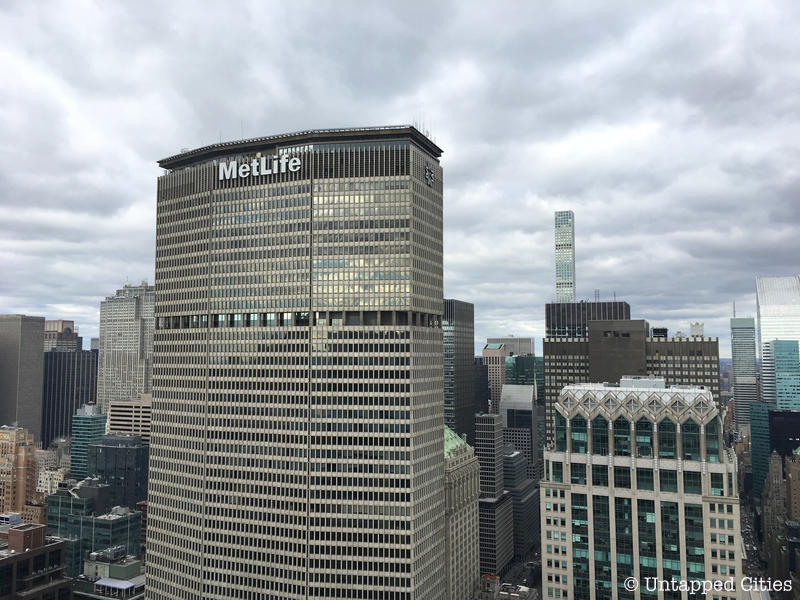
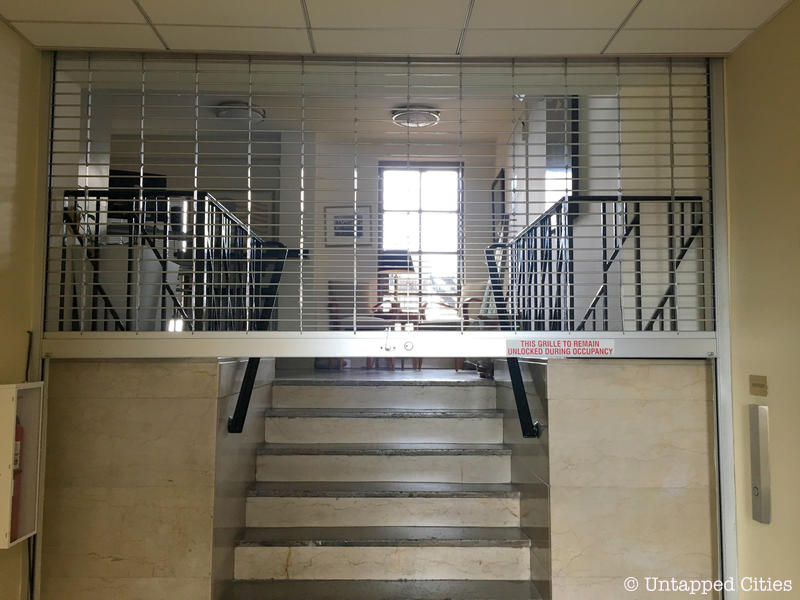
The 56th floor still contains office space, much like it did when the building was constructed, although those offices were originally dedicated to the Chanin Organization, whose headquarters began on the 52nd floor. There was even a gleaming Art Deco-style bathroom, with tiles by the Globe Tile company, that was deemed “America’s finest bathroom,” at a building trades convention. One of the most unique offices on this floor is an elevated space accessed via a short six step staircase with decorative metal railing – clearly part of the office when the Chanin Organization occupied the whole floor.
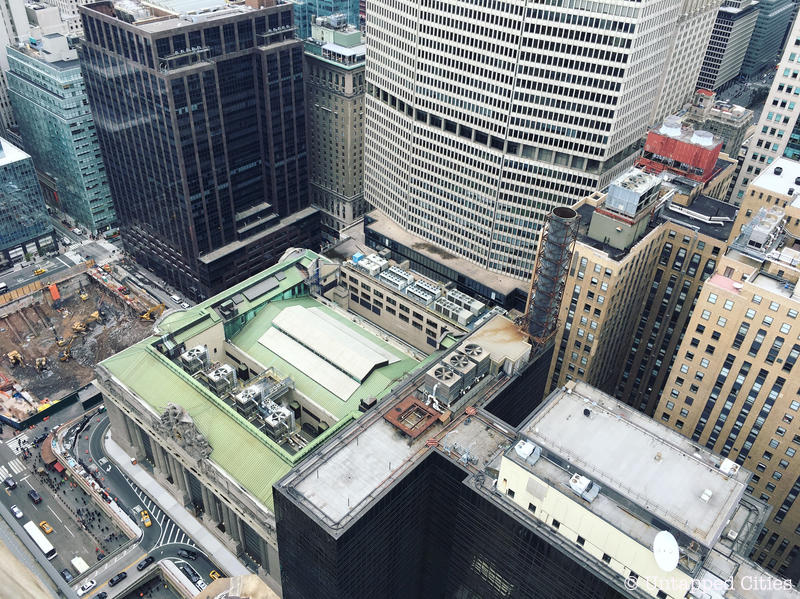 View looking down from observation deck of Chanin Building to Grand Central Terminal
View looking down from observation deck of Chanin Building to Grand Central Terminal
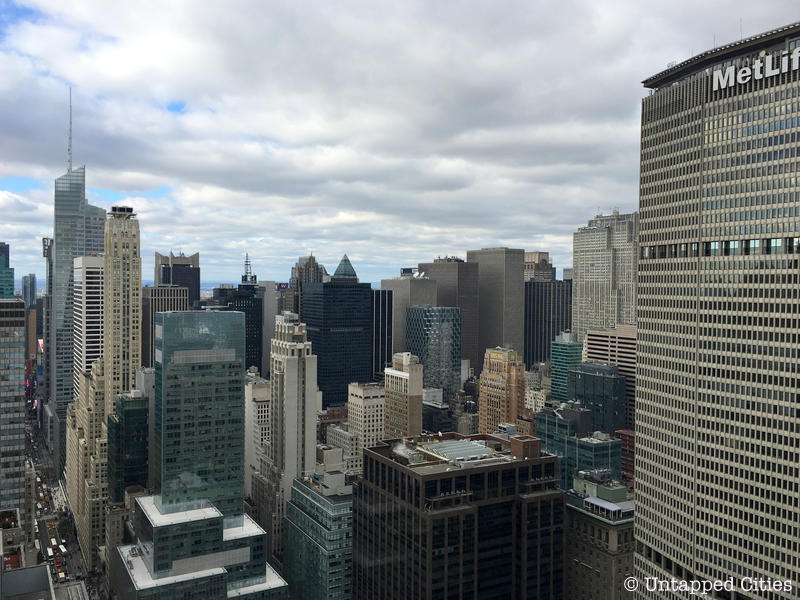
The 50th and 51st floor were originally a theater for the theatrical division of the Chanin Organization, a building company started by Irwin S. Chanin with residential homes and expanded into theater construction (most notable the Roxy), and theater management, and later Midtown skyscrapers. The theater was later converted into office space.
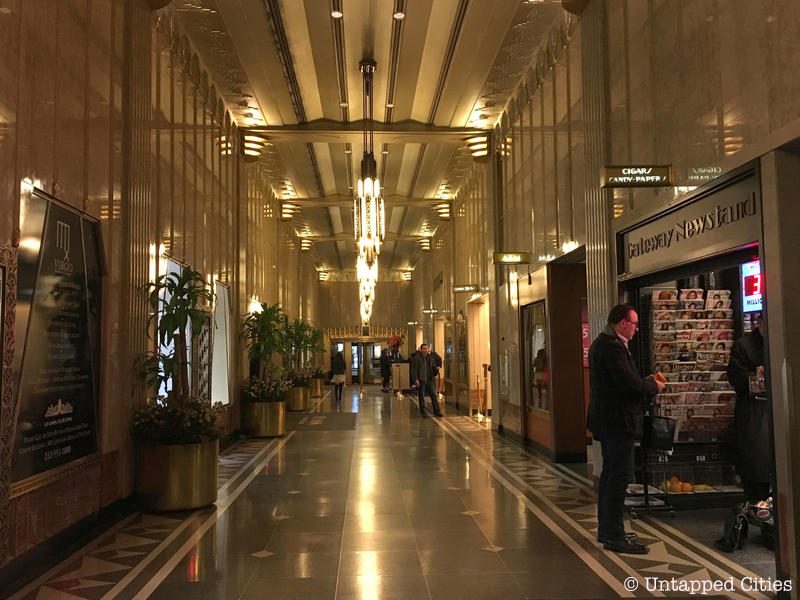
The lobby is a stunning space, and you can clearly see why in 1929 architectural critic Matlack Price deemed the building, which was designed by the architectural firm Sloan & Robertson with sculptural decoration by Rene Chambellan, as a “splendid contribution to twentieth century architecture that powerfully rationalizes all the novel features of this new style – a splendid contribution to the architecture of all time because it is a good design.”
Below ground, the building contained a bus terminal for the Baltimore & Ohio Railroad, a movie theater and a connection to Grand Central Terminal – the first two no longer exist.
Next, check out our explorations in other Art Deco skyscraper observation decks like 70 Pine and 20 Exchange.






